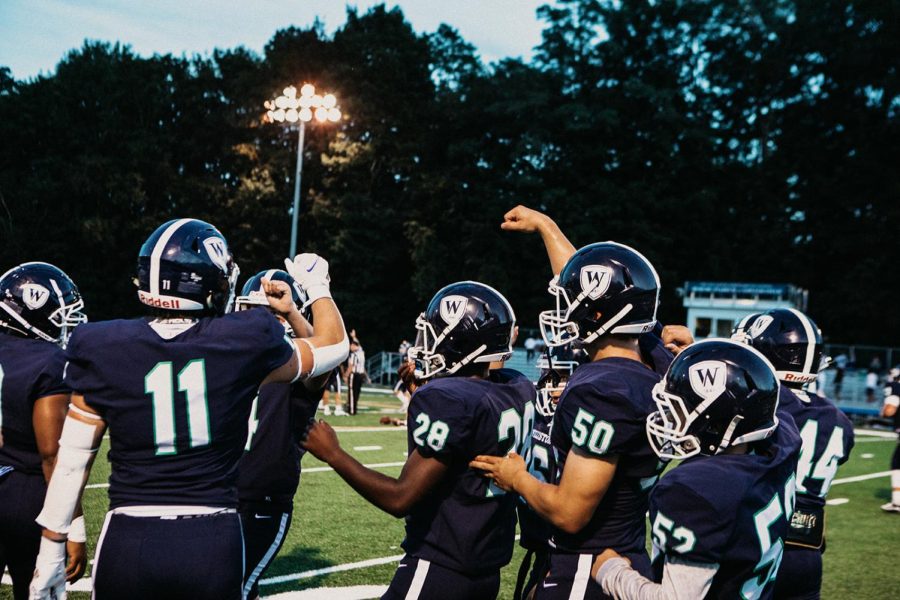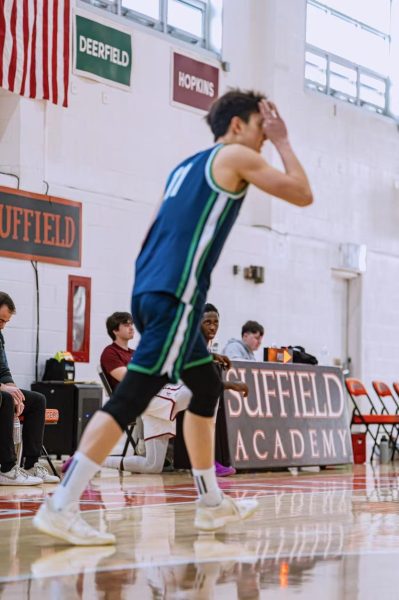Sports and Stress Lead to Early Season Injuries
As Williston settles back into the first trimester and its fall athletic program, injury prevention becomes more important than ever.
Williston’s athletic program is physically demanding, no matter what level you are on. After a summer of rest and relaxation, many students enter the year with expectations of high success at their fall sport. Without proper training, and the high levels of stress the beginning of a new trimester brings, students often find their bodies cannot keep up.
Ansel Garvey and Melissa Brousseau, the Co-Athletic Trainers of Williston’s Athletic program, see an abundance of injuries daily. As the first athletic season of the year is getting into the thick of competition, the repetition in injuries has started to increase.
In an email to The Willistonian, Brousseau lists just a few of the most common injuries to come through her doors. “Strained joints, a few muscle sprains, and injuries from the summer” all make frequent appearances in the early fall season, Brousseau reported.
Each sport has injuries that they deal with more than others, because each sport uses different parts of the body. Football is more likely to have head injuries, due to the roughness of play, while cross country runners are more likely to have foot and leg muscle injuries. The probability of injury depends on how well you train.
This chance of injury due to downtime raises the topic of cross training, a strengthening tactic Brousseau is in favor of.
“Cross training in the off season and coming into your season eating well and sleeping well are tools that are scientifically proven to support injury prevention,” Brousseau wrote in an email to The Willistonian. “Progressive training, a focus on skill development, resistive training, and supplementing with mobility/flexibility work are also required.”
Directly after school, more than 50% of the school’s student population heads to the Athletic Center, or Galbraith fields to partake in all levels of athletic activity ranging from Varsity to 3rds. The other part of the student body that is not spending their time on a field or in the gym flock to all corners of campus, from the ceramics studio for arts intensive to Scott Hall for theater.
Each Williston student is required to do at least one “group activity” every year. This can range from robotics to varsity football to managing JV volleyball. As long as it’s not a solo endeavor, it counts as a group activity. This requirement prompts many Williston students to try out new sports they’ve never done before. Along with the novelty of something new, the introduction of a new activity to your body can often be taxing mentally as well as physically.
Some Williston athletes are required by their main sport to participate in three levels of varsity competition to keep up training rigor and physical shape, an agreement they sign on to when they join the school. Regardless of any personal goal or guidelines set by a team, Williston students are busy people, all year round.
Nasheen Gibbs, a 10th grade boarder from Newark, N.J., said his sport, JV football, aids in relieving stress, aside from the chunk of time it consumes from his day.
“It’s too much of a commitment,” he said. “I have to spend at least two hours of my day getting ready for practice, going to practice and participating, and then come back to the dorm and do homework. It splits your focus, which can be mentally draining,” he said.
With as many as five classes per day, plus sports and meals and homework, some students feel they have very little time to destress; high levels of stress can also impact students physically.
Some handle the combined pressures better than others, while some find solace in different activities. Unlike Nasheen, many students disagree with the idea of their afternoon program adding stress, and consider it to be a distraction from outside factors.
Maisie Mattocks, an 11th grade boarder from Shutesbury, Mass., looks forward to her afternoon program as a way to relax after a rough day of classes. “I always feel better after lift,” she said. “It relieves my stress — always.”
No matter their afternoon program, the one factor that aligns all Williston students is the level of expectation and “juggling” of tasks each person has. It is these high levels of stress that play into the focus on injury prevention. A 2015 article from The Frontier highlights the literature that “has shown that cumulative stress is correlated with an increased susceptibility to illness and injury.”
As Brousseau explained, stress injuries occur and present themselves in a variety of ways.
“You have a healthy bone and on the other end of the spectrum, you have a stress fracture,” she explained. “Usually we see stress reaction, which lands in the middle. Sports with a repetitive action can cause this stress.”











